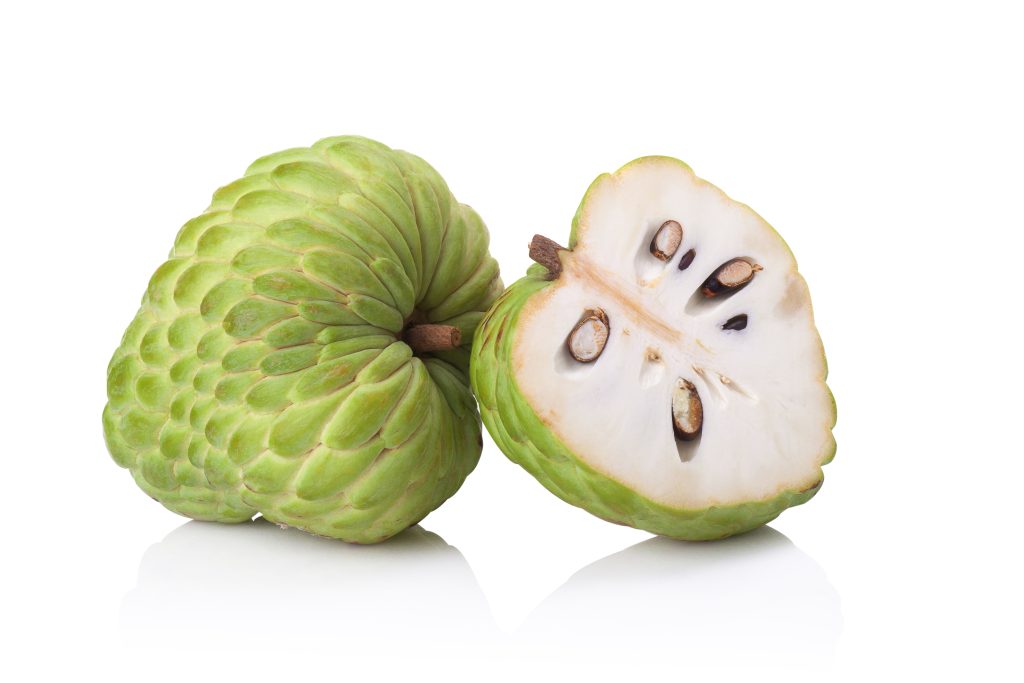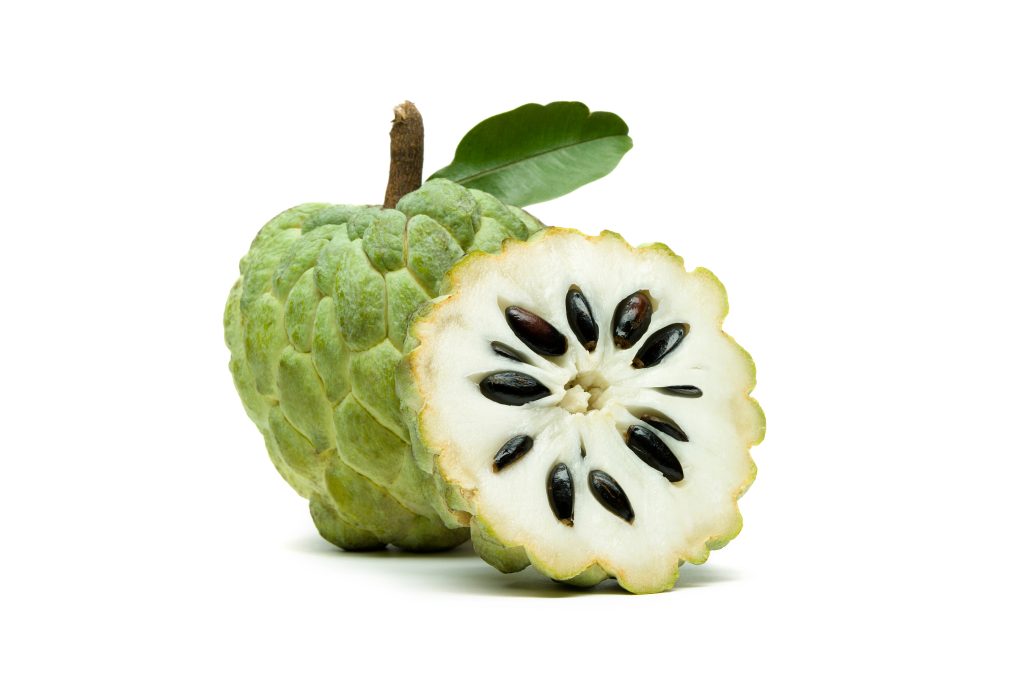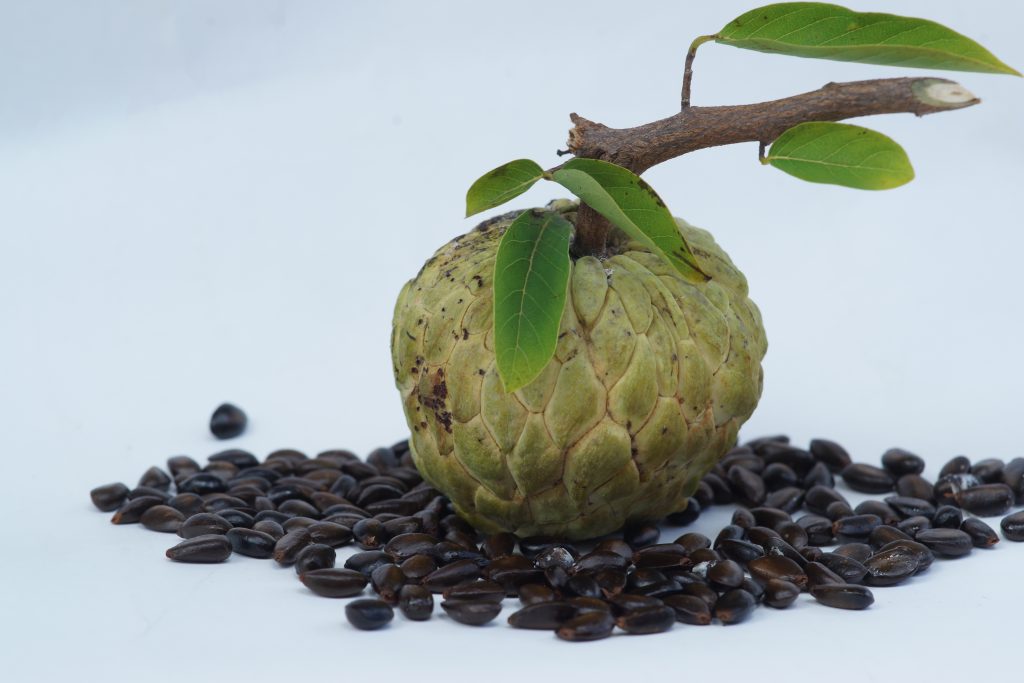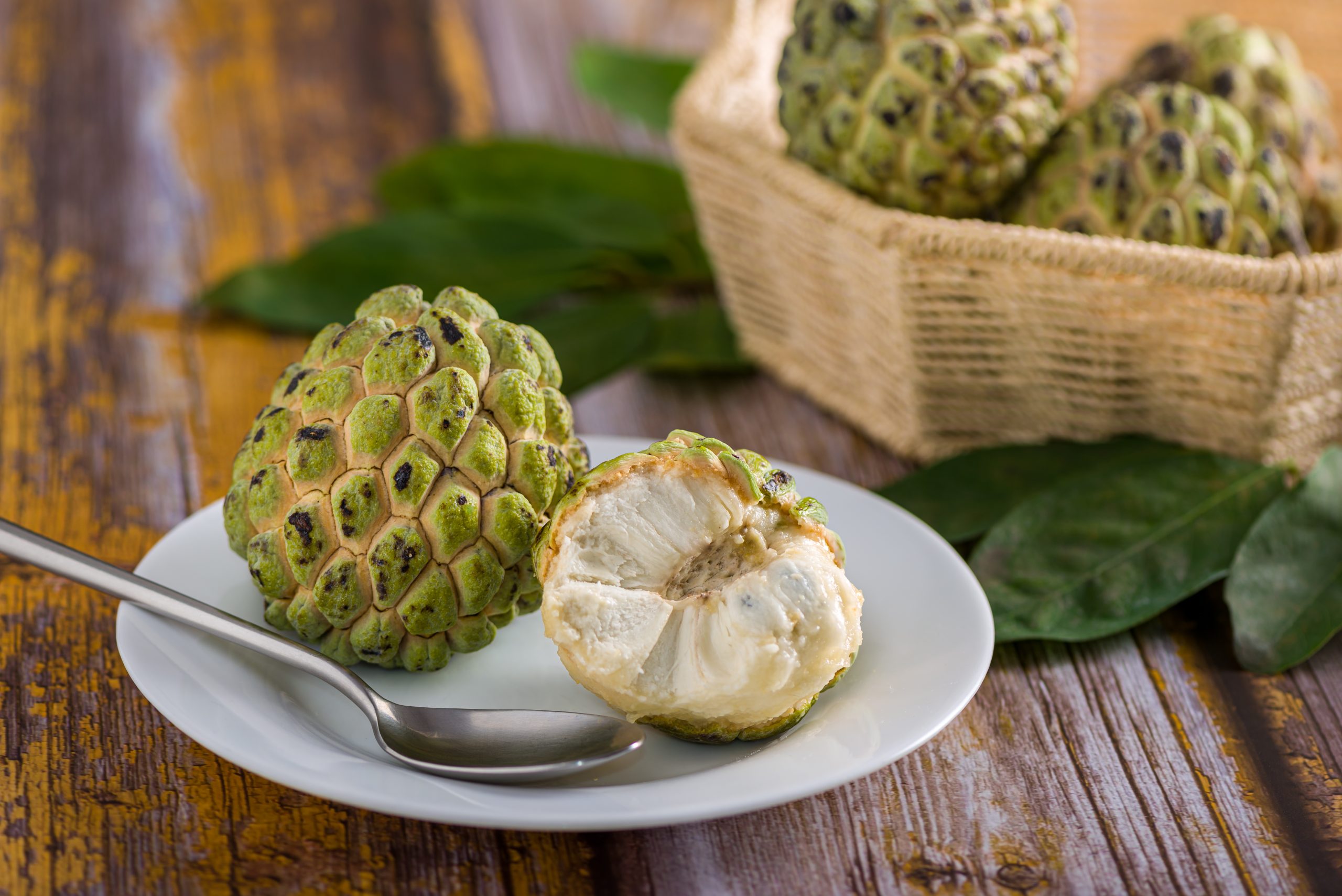Sugar apples (Annona squamosa L.) are a tropical fruit with rough, scaly exteriors, knobby segments, and sweet, creamy flesh. They are a popular fruit in many parts of the world, including Southeast Asia, South America, and the Caribbean. With a unique flavor and texture, sugar apples are a delicious and nutritious addition to any diet.
Table of Contents
What is a Sugar Apple?
Sugar Apples, also known as Sweetsop, are a variety of tropical fruit belonging to the Annona family. It is native to the Caribbean, Central America, and parts of South America but is also cultivated in other tropical regions worldwide.
The fruit has a round or heart-shaped appearance with a knobby exterior. It is typically green in color and can range in size from 2 to 4 inches in diameter. The inside of the fruit is white and pulpy, with tiny black seeds scattered throughout. The pulp is fragrant, sweet and has a creamy texture similar to custard.
The Sugar Apple is also known by other names in different regions, such as Custard Apple, Cherimoya, and Bullock’s Heart.
In terms of flavor, the Sugar Apple is described as having a delicate, sweet, and slightly tangy taste. The fruit’s unique aroma is often compared to a pineapple, banana, and vanilla blend. It is commonly eaten fresh or used in desserts, such as ice cream and pastries.

The History of Sugar Apples
The origin of the Sugar Apple is unclear, but it is believed to have originated in Central America or the West Indies. There are also ancient Indian sculptures that depict a similar fruit, leading some to believe that the fruit tree was originally from India.
Nowadays, the tree is commonly found in tropical regions worldwide, including southeast and South Florida. Jamaican farmers have also begun to grow more Sugar Apple orchards, and many locals believe that the sugar apple was first discovered in Jamaica.
What Does a Sugar Apple Taste Like?
When eaten raw, a sugar apple has a sweet and slightly tangy flavor, similar to a combination of pineapple, mango, and strawberry. The flesh is soft and juicy and contains tiny black seeds that are not usually eaten.
Sugar apples are not typically cooked but can be used to make desserts such as ice cream, sorbet, and custard. When used in desserts, the flavor of the sugar apple is typically more pronounced, and the texture may be smoother due to blending or cooking.
How to Tell When Sugar Apples are Ripe
When it comes to telling whether sugar apples are ripe, here are some key things to look for:
| Color | The skin of a ripe sugar apple turns from pale green to a light yellowish-green color. The fruit should also have a uniform color all over and should not have any bruises or dark spots. If that’s not the case, it’s unripe. |
| Texture | A ripe sugar apple fruit will have a slightly soft texture when you press it gently with your fingers. However, it should not be too soft or mushy. |
| Smell | A ripe sugar apple will have a strong, sweet aroma. The fruit may not be ripe if it has no scent or an unpleasant odor. |
| Bruises | When shopping for sugar apple fruit, look for fruits free from bruises or blemishes. |
Sugar Apples vs. Custard Apples


Sugar and custard apples are tropical fruits belonging to the same family Annonaceae. They are both known for their sweet and creamy taste but differ in some ways. Here are some of their similarities and differences:
Similarities
- Both fruits are native to tropical regions and are commonly found in countries such as India, Thailand, and the Philippines.
- They are both relatively small, 3 to 6 inches in diameter.
- Both fruits have a green, scaly rind and a creamy white interior with black seeds.
- They are eaten raw as a dessert fruit or used in smoothies, ice creams, and other desserts.
Differences
- They’re essentially different fruit: The sugar apple is Annona squamosa, and the custard apple is Annona reticulata.
- Sugar apples have a knobby appearance, while custard apples have smoother skin.
- Sugar apples have a sweeter taste with a flavor similar to pineapple. In contrast, custard apples have a more subtle and nuanced flavor, often described as a banana, pineapple, and strawberry mix.
- The flesh of a sugar apple is typically more grainy and separated, while the flesh of a custard apple is more custard-like and cohesive.
- Sugar apples have a higher fiber content, while custard apples have a higher water content.
- The seeds of a sugar apple are larger and more prominent than those of a custard apple.
Can I Eat Raw Sugar Apples?
Many people enjoy eating raw sugar apples as a sweet and refreshing snack. However, it’s important to note that sugar apples have a thick, fibrous core that is not edible and should be removed before eating.
Additionally, some people may be allergic to sugar apples or experience digestive discomfort after eating them, so it’s essential to listen to your body and consume them in moderation.
Cooking with Sugar Apples
Sugar apples are tropical fruit with sweet, creamy flesh that can be used in various dishes. To prepare sugar apples for cooking, cut them in half lengthwise and remove the seeds and fibrous core. The fruit’s skin can also be challenging to eat, so it is often removed with a knife or vegetable peeler.
Once the sugar apples are prepared, there are many ways to cook with them. In traditional Caribbean and Latin American cuisines, sugar apples are often used to make desserts and sweet treats, such as ice cream, custards, and pies. In India, sugar apples are commonly used in milk-based sweets.

Recipes with Sugar Apples:
Chicken Sith Custard Apple Sauce: Who doesn’t love a good chicken dish? The sweet taste of custard apples perfectly complements the savory chicken.
Cinnamon Sugar Apple Cake: This recipe is perfect for any occasion or just because! The cinnamon sugar apples give this cake a sweet and tangy taste that goes perfectly with cinnamon: a classic combination.
Sweetsop Salad: This salad has a fantastic blend of sweet and savory flavors that bring out some unique tastes in your mouth. And it is so simple to make!
Sugar Apple Smoothie: A smoothie made with sugar apples? Yes, please! This smoothie will satisfy your sweet tooth while also providing you with a burst of energy.
How to Store Sugar Apples
Sugar apples are a delicate fruit that requires proper storage to maintain their freshness and quality. Here are some tips on how to store sugar apples:
Store in the pantry or at room temperature: Place the fruits in a bowl and keep them in a cool, dry place away from direct sunlight. They should be consumed within 1-2 days of ripening.
Refrigeration: If you want to store sugar apples longer, you can refrigerate them, but before, you’d have to wait until they’re fully ripened. Then place the ripe fruits in a plastic bag and store them in the refrigerator’s crisper drawer. They can last for up to 30 days in the fridge.
Freezing: Cut them into pieces and remove the seeds. Place the pieces in an airtight container or freezer bag and freeze them. Sugar apples can last for up to 6 months in the freezer.
Nutritional Benefits of Sugar Apples
Sugar apples are a type of fruit considered very healthy because they have minerals like iron, manganese, magnesium, calcium, potassium, and phosphorus, and vitamins like A, B1, B2, B3, B5, B6, B9, and C. They are also an excellent source of phytochemicals and antioxidants.
Sugar apples can help improve skin health because their antioxidant content protects the skin from damage. It also contains vitamin A, which helps in collagen production.
Because of their high vitamin C content, sugar apples can also boost immunity and help fight infections. They may prevent heart problems thanks to magnesium and potassium content, which balances sodium levels.
The Other Uses of Sugar Apples

While sugar apples are a popular fruit to eat in many cultures, the seeds of the sugar apple tree contain small amounts of toxins like annonacin and cyanogenic glycosides, which are mildly poisonous if consumed in large quantities.
Some cultures have used these toxic properties to their advantage by using the seeds as a natural insecticide to repel pests and insects. The crushed seeds can be used to spray a solution onto crops or stored grains to deter insect infestations.
In some traditional medicine practices, the seeds of sugar apples are also used as a remedy for parasites, fever, and diarrhea. However, it’s important to note that consuming the seeds or using them for medicinal purposes should only be done under the guidance of a qualified healthcare practitioner.
Where to Purchase Sugar Apples
If you want to purchase sugar apples, your best bet is to check with specialty stores and farmers’ markets that cater to a diverse range of fruits and vegetables. You may also find them in larger grocery stores with a broader range of exotic fruits.
The best time to find them is during the peak season, which varies depending on the region. The season generally runs from late summer to early fall, with some variations.

